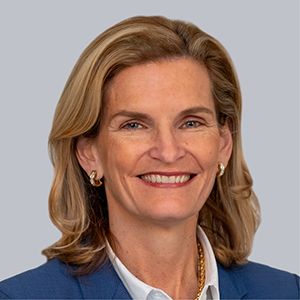
Why space security matters for us all

By Doreen Bogdan-Martin, Secretary-General, ITU
Safety, security and sustainability are deeply interconnected in the wide-open environment of outer space. Strengthening those linkages, through cooperation and shared commitment, is our collective responsibility as governments, companies, United Nations agencies and global citizens.
The International Telecommunication Union (ITU) first became involved in space communications soon after the launch of Sputnik I in 1957. With nearly every space activity since then depending on radiocommunication, ITU’s coordination ensures that services ranging from broadcasting to scientific research can co-exist without harmful interference.
A landmark decision by ITU Member States in 1971 protects radio astronomy observation on the far side of the Moon from radio-frequency interference. Today, our Radiocommunication Study Groups continue laying the technical groundwork for seamless communication on and around the Moon.
Roughly 80 per cent of the agenda for our next World Radiocommunication Conference (WRC-27) is focused on space-related issues. As new actors and systems enter every orbital regime, responsible and cooperative spectrum use is more critical than ever.
For ITU, a secure and sustainable space environment means one free from harmful radio interference, where spectrum and orbits usage are coordinated, efficient, and accessible to all. This is a vision enshrined in international law through the ITU Constitution and Radio Regulations – binding treaties upheld by all ITU Member States. It reflects six decades of experience in coordinating satellite networks, resolving disputes, and promoting equitable access to spectrum and orbital resources.
Yet as spectrum coordination in space becomes more urgent, it also becomes more complex.
Jamming and spoofing
Reports of intentional interference have surged. Jamming of Global Navigation Satellite System (GNSS) signals disrupts aviation and maritime operations. Spoofing misleads aircraft, raising the risk of unauthorized airspace entry, conflicts with other aircraft, and accidents. Ships face similar threats, such as collisions and running aground.
United Nations field missions, reliant on aircraft, ships, and radiocommunication stations, are also affected. GNSS systems like GPS, Galileo, GLONASS, and BeiDou support emergency services and disaster relief – making radio interference a threat to safety, resilience and societal stability for vulnerable populations and refugee host communities.
The reports we receive are not of isolated incidents. GNSS interference nearly tripled last year. In August 2024 alone, GPS spoofing occurred over 1,100 times daily, according to aviation regulators.
In response, ITU joined the International Civil Aviation Organization (ICAO) and International Maritime Organization (IMO) in urging governments and regulators to protect satellite navigation-services, strengthen enforcement of international rules, and raise awareness among operators about spoofing and jamming risks.
Congested space
Unintentional interference is also rising, driven by the proliferation of satellites, shared frequency bands, and insufficient coordination of frequency assignments and orbital manoeuvres.
ITU’s Radiocommunication Bureau notes growing pressure on spectrum, especially in low-Earth orbit, where legacy systems co-exist with ever larger constellations. Spectrum-orbit resource requests – a pre-requisite for authorized satellite launches – have increased 5.5 times over the past decade.
Without effective regulatory frameworks, access to those resources will become congested and contested. Likewise, without trust in binding international treaties like the ITU Radio Regulations, the risk of escalation and conflict grows. These challenges underscore the fragility of our shared space environment.
But they also reveal opportunities – with existing regulations, along with the tools, expertise, and platforms already available through the multilateral system – to address critical space security and sustainability issues.
From vision to implementation
Three ways stand out:
- First, regulatory evolution. Updates every four years keep Radio Regulations responsive amid new technologies and realities, in a space environment increasingly shaped by private actors and emerging economies.
- Second, international cooperation. Alongside 194 Member States, ITU brings together over 1,000 private sector, academic, and civil society organizations. Our study groups unite regulators, operators, engineers and researchers in solving shared challenges, setting technical standards, and helping advance secure and sustainable space use.
- And third, capacity building. ITU supports countries with training, software tools, and technical resources for spectrum management and international regulatory compliance. We also help new entrants to the space economy participate in global coordination and standards processes.
From our World Radiocommunication Seminars to our Space Sustainability Gateway, we prepare emerging space actors to engage, share data, and contribute to building global resilience.
Our ITU Space Sustainability Forum (coming up on 7-8 October in Geneva, Switzerland) brings governments, the space industry, academia, and civil society to the table to explore practical solutions across three workstreams: coordination, capacity building, and space data resources.
Acting to keep space sustainable
More than just a technical or diplomatic challenge, harmful radio interference tests our resolve to uphold the foundational agreements that make space a common good.
Let’s seize this moment to reaffirm multilateralism and open dialogue.
Only by working together can we ensure that the signals we send into space return with purpose – serving peace, dignity, and a safer, more sustainable space environment for all.
Based on Doreen Bogdan-Martin’s remarks on 9 September 2025 at the Outer Space Security Conference (OS25) hosted by the United Nations Institute for Disarmament Research (UNIDIR).
Learn more about ITU’s Space Sustainability Forum.
Header image credit: Adobe Stock
